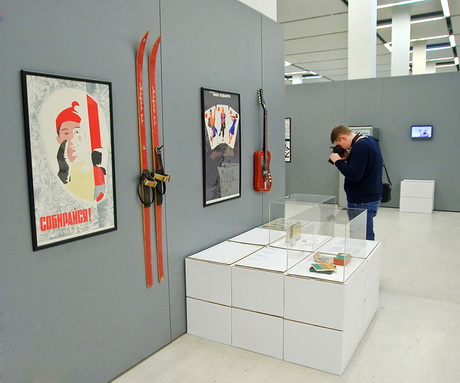
Today the inscription ‘Made in USSR’ is a guarantee of quality. The Soviet Union produced anything from children's toys to aircraft. Certain machinery, manufactured decades ago, still works. A lot of products, made in the USSR, have become iconic. Are there more durable bags than string ones (avoska)? Who invented the famous concrete fence with diamond-shaped dents? Is it true that a roly-poly toy was Barbie’s contemporary?
It seems that everything in the Soviet Union was made to last for ages. Machinery ran without interruption, glassware could be used to crack nuts. A faceted glass still remains one of the main symbols of the Soviet Union.
“The trend was very constructive: convenience and function, while aesthetics ranked second. A standard faceted glass is made of thick glass, it is suitable for all catering institutions and households even today,” said architect Kira Shalmanova.
Clear proportions and smooth lines are typical for many things, created in the USSR. Miles of concrete fences with diamond-shaped dents are still stretching across the post-Soviet space. When architect Boris Lakhman was tasked to come up with the design of a fence, he tried to invent something more interesting. For example, one of his sketches depicts a fence, imitating brickwork. In the end, the commission selected the easiest option — with diamond-shaped dents. Bonus — it is not easy to leave inscriptions on such fences. They are vandal-proof.
Beauty was not at the top of the list. Despite this, the design of some Soviet machinery is viewed as benchmark even today. In the 1960s, the Soviet Union was already manufacturing home appliances: television sets, radios. All housewives were dreaming of a vacuum cleaner under the trademark ‘Raketa’, which cost 35 rubles. The average salary was 96 rubles. So, it was quite realistic to purchase a vacuum cleaner after saving money for some time.
“Virtually everyone could afford Raketa, it was an extra reliable vacuum cleaner, served for many years. I think that many grandparents still keep it somewhere, in a working condition,” said Olga Druzhinina, curator at the Moscow Design Museum.
All apartments were furnished similarly: a wall unit from Yugoslavia, crystal glassware from the Czech Republic, a chandelier ‘Cascade;. Many items have survived, some of them got into museums.
“Roly-poly toys, kaleidoscopes... There are things, about which all children in the USSR were dreaming, for example, Za Rulyom. People still react emotionally to them, these are the things that surrounded a Soviet person in everyday life, said Lina Sergeyeva, CEO of the Ticket in the USSR Museum.
The same enterprise could manufacture children's toys and armored vehicles. For example, the famous Nevalyashka (roly-poly toy) was made at Tambov Gun Powder Plant. The Russian roly-poly toy is a contemporary to the American Barbie. It appeared in 1959 in Kotovsk, a town in the Tambov region. Currently these toys are made in Russia, as well as in Germany, the United States, and Kazakhstan.
Probably the most iconic Soviet item, found in every household — a string bag, avoska. But it was not invented in the USSR.
“In the 1920s, such bags were popular in Europe, because no artificial materials were available at the time, so people used it for errands. It was at hand all the time, as it could be folded, occupying very little space,” said Yevgeny Rapoport, head of the Avoska Gives Hope project.
In his words, string bags get sold out even today. Earlier avoska came in black or beige, today there is plenty of colors.
The secret of such a success of anything Soviet, in addition to the quality — nostalgia. It will take many years before the Soviet legacy is interesting to collectors only.


Comments (1)
Twitter
Facebook
Pinterest
E-mail